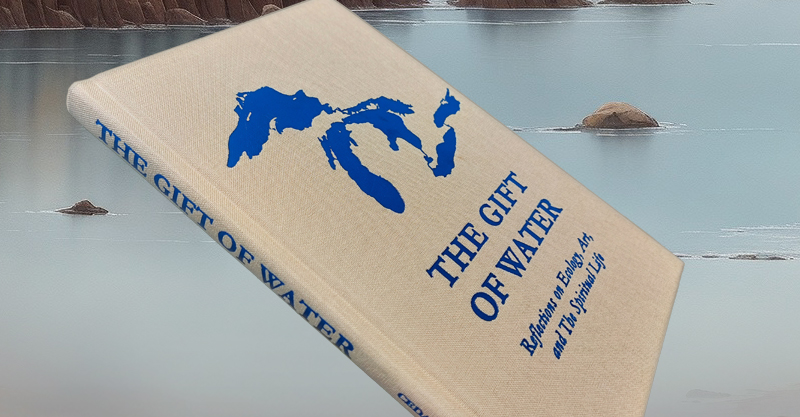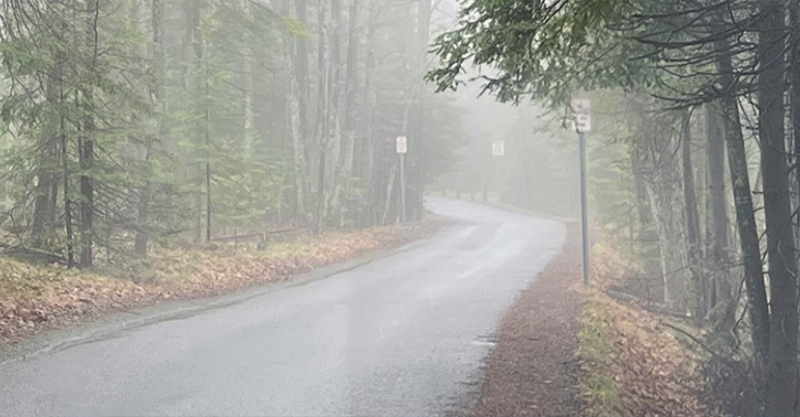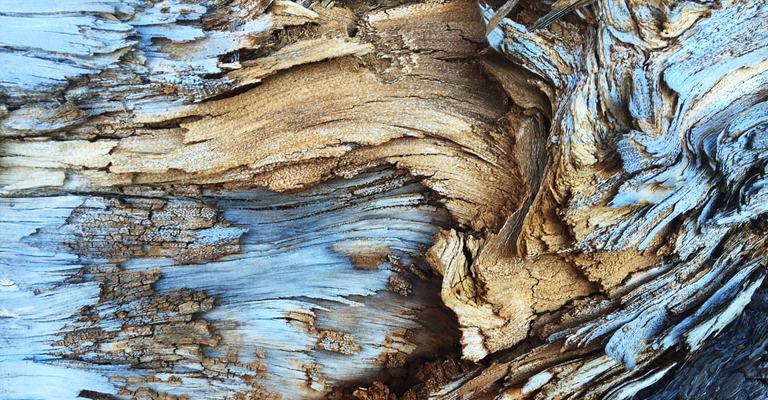The Gift of Water
as seen in the Marquette Monthly October, 2018
By John Gagnon
Lake Superior is a pathway, a route of commerce, and an outsized lake of fable, song, and poetry. It is also a reservoir of brief human history and of epochal geology. Lake Superior is not nearly as old as the hills. The Lake is some 9,500 years old; the rocks around it, however, are age-old. Pictured Rocks, at Munising, are hundreds of millions of years old; Brockway Mountain, in the Keweenaw Peninsula, is about 1.1 billion years old; Mount Arvon, in the Huron Mountains, is over twice as old as Brockway: 2.7 billion years old.
No matter their age, all these rocks were once covered by massive glaciers that began forming in North America two million years ago. These glaciers have, so far, advanced and retreated four times. At one point, the glaciers were bigger and thicker than those covering Antarctica today. The last glacial event in the region began about 70,000 years ago. It scooped out the Lake Superior basin; when it retreated, that basin filled with water. As little as four thousand years ago, Lakes Superior, Huron and Michigan were one body of water. Today, Lake Superior, the largest freshwater lake in the world by area, is now at its smallest ever: 31,820 square miles, an area that could accommodate seventeen Delawares.
Superior’s shores were initially peopled by the Ojibwe. They called Lake Superior Gitche Gumee, or Great Sea. Today native words are common for place names around the southern rim of the lake: Ahmeek (beaver), Calumet (peace pipe), Negaunee (pioneer), Ishpeming, (the sky above, or heaven), and the Keweenaw (the place we go around).
Etienne Brule, the first European to see Superior, reached the east end of the lake at what would become Sault Ste. Marie, in 1610. He would have been 18. Brule is considered the first coureur de bois (“woods runner”), the fur-trading pioneers who pushed west into the North American wilderness. Following Brule came trappers, voyageurs, scientists, miners, fishermen, hunters, and tourists, as well as missionaries for whom towns are named: Pere Marquette, Father Allouez, and Bishop Baraga. In order, these people came in birch-bark canoes, mackinaw boats, schooners, and steamships. Sault Ste. Marie is French for The Rapids of St. Mary. Early on, the rapids were a bottleneck between Lake Huron and Lake Superior. When the Soo shipping locks opened in 1855, the rapids became a faucet for the flow of people into the area.
These newcomers found in this neck of the Great Lakes two key harbors. On the west end, Duluth, 1,650 miles by water from the Gulf of St. Lawrence, is the farthest inland seaport in the world. At the lake-head, Thunder Bay is roughly halfway along a historic water route of lakes and rivers and portages that stretches from Quebec City to Vancouver, 2,900 miles, and was navigated during the fur-trade days by paddle and canoe.
Longfellow called Superior “the shining Big-Sea-Water.” The French called it Mer Douce (“sweet water”) and Lac Superieur (“uppermost of the Great Lakes”). The natives had a second name for it: “the water too far to see across.”
The bounty of the watershed was prized throughout generations: early on, beaver furs were “soft gold” and the caviar of sturgeon, “black gold”; later, lodes of iron and copper triggered mining booms.
The two biggest landmarks of the lake, the Keweenaw Peninsula and Isle Royale, both initially attracted copper miners. The Keweenaw is like a big breakwater that pokes a gnarly finger seventy miles into the lake. Isle Royale is an archipelago forty-five miles long that is surrounded by a rosary of four hundred small islands.
Longfellow described the lake as “clear and sunny water.” It still is. Today, scientists use a shiny metal disc, the size of a dinner plate, that they lower into the water on a rope to record the depth at which the disk can be seen. In Lake Michigan’s Green Bay, it’s four feet. In Lake Superior, it’s seventy feet.
Longfellow also wrote of winter storms around the lake: “unheard-of coldness” and snow that “whirled and hissed and drifted.” Indeed, Lake Superior dumps heavy snows on the Upper Peninsula, especially on the Keweenaw, where the record annual snowfall is just shy of 400 inches, which is likely the most annual snow of any non-mountainous region in the country.
The lake and the land around it have spawned folklore. Superior is called “the big lake,” the winters there, “the big white,” and the frontier of the Lake Superior uplands, “the big lonely.” Longfellow published the “Song of Hiawatha” in 1855. It is set in the Upper Peninsula and is about giants and ghosts, the god of water and the spirit of storm, the coward and the loon-hearted brave. This “tale of wonder” is legend, lamentation, and lullaby.
Those matters aside, we all know, of course, that Paul Bunyan dug out the lake to get water to ice his winter logging roads.
WATER SAVER TIPS
According to Joan Chadde, an environmental steward at Michigan Tech:
Planting shrubs along streams and lakes curtails erosion and attracts songbirds.
A rain barrel collects roof runoff to water a garden.
Contributor’s note: John Gagnon, a native of the Upper Peninsula, lives in Lake Linden.

“The Gift of Water” columns are offered by the Northern Great Lakes Water Stewards and the Cedar Tree Institute, joined in an interfaith effort to help preserve, protect, and sanctify the waters of the Upper Peninsula.






